-
 Bitcoin
Bitcoin $119000
0.17% -
 Ethereum
Ethereum $3664
-2.12% -
 XRP
XRP $3.229
-7.77% -
 Tether USDt
Tether USDt $1.001
0.02% -
 BNB
BNB $783.2
-1.48% -
 Solana
Solana $191.3
-5.26% -
 USDC
USDC $1.000
0.03% -
 Dogecoin
Dogecoin $0.2450
-7.74% -
 TRON
TRON $0.3115
-1.61% -
 Cardano
Cardano $0.8229
-6.80% -
 Hyperliquid
Hyperliquid $44.17
-2.93% -
 Stellar
Stellar $0.4343
-7.23% -
 Sui
Sui $3.792
-4.09% -
 Chainlink
Chainlink $18.38
-5.73% -
 Hedera
Hedera $0.2491
-7.79% -
 Bitcoin Cash
Bitcoin Cash $518.1
-1.51% -
 Avalanche
Avalanche $24.13
-5.84% -
 Litecoin
Litecoin $113.9
-5.41% -
 UNUS SED LEO
UNUS SED LEO $8.974
-0.21% -
 Shiba Inu
Shiba Inu $0.00001400
-7.98% -
 Toncoin
Toncoin $3.215
-2.09% -
 Ethena USDe
Ethena USDe $1.001
0.03% -
 Polkadot
Polkadot $4.178
-6.84% -
 Uniswap
Uniswap $10.38
-3.05% -
 Monero
Monero $317.8
-1.85% -
 Bitget Token
Bitget Token $4.733
-1.94% -
 Pepe
Pepe $0.00001293
-8.20% -
 Dai
Dai $1.000
0.02% -
 Aave
Aave $292.8
-4.74% -
 Bittensor
Bittensor $430.1
-3.67%
Can you mine Bitcoincoin with a CPU
You can mine Dogecoin with a CPU, though profitability depends on hardware performance, electricity costs, and network difficulty.
Jul 17, 2025 at 01:14 pm
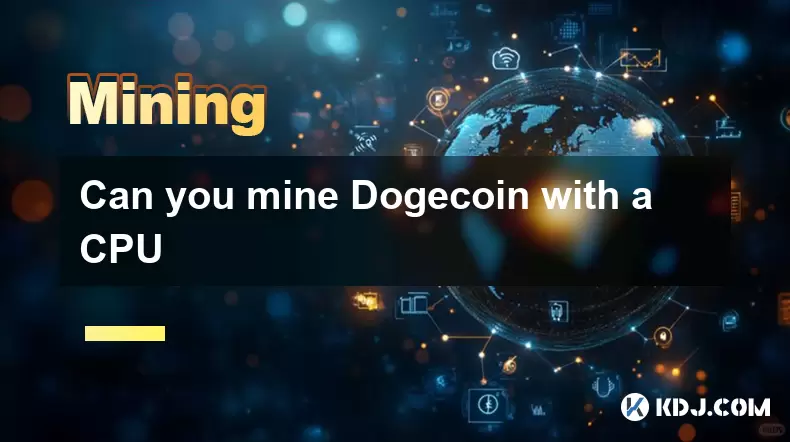
Understanding Dogecoin Mining
Dogecoin (DOGE) is a cryptocurrency that was originally created as a joke in 2013 but has since gained significant popularity and value. It uses the Scrypt hashing algorithm, which is also used by Litecoin, making it relatively accessible for mining with consumer-grade hardware. Unlike Bitcoin, which relies on SHA-256 and typically requires ASIC miners, Dogecoin can be mined using both CPUs and GPUs, especially when working in pools or solo mining with modest resources.
Mining Dogecoin involves verifying transactions and adding them to the blockchain by solving complex cryptographic puzzles. The Scrypt algorithm allows for memory-intensive computations, which makes CPU mining more viable compared to other cryptocurrencies that require specialized hardware.
Can You Mine Dogecoin With a CPU?
Yes, you can mine Dogecoin with a CPU, although the efficiency and profitability depend on several factors such as your processor's performance, power consumption, and current network difficulty. While GPU mining tends to yield better hash rates, entry-level miners often start with CPUs due to their availability and lower initial investment.
The key factor is choosing a mining software that supports CPU mining of Scrypt-based coins like Dogecoin. Popular options include cpuminer-multi, MinerD, and XMRig, though some may require configuration adjustments to work optimally with DOGE.
Setting Up Your CPU for Dogecoin Mining
To begin mining Dogecoin using your CPU, follow these steps:
- Download a compatible miner: Choose a CPU mining tool that supports Scrypt. Cpuminer-multi is widely used and open-source.
- Choose a mining pool or go solo: Solo mining is possible but less predictable due to low block discovery chances. Joining a Dogecoin mining pool increases your odds of earning regular rewards.
- Register with the mining pool: Create an account on platforms like Multipool or Prohashing. These pools support merged mining with Litecoin, potentially boosting earnings.
- Configure your miner: Edit the batch file or configuration settings to input your pool address, username, password, and any additional parameters.
- Run the miner: Execute the script and monitor the output to ensure your CPU is hashing at a stable rate without errors.
Ensure your system has sufficient cooling and power supply, as mining can stress hardware over extended periods.
Choosing the Right Mining Pool
Selecting the right mining pool significantly impacts your mining experience. Pools distribute work among participants and reward based on contributed hash power. When choosing a pool, consider:
- Pool fees and payout structure: Some pools charge a small fee while others offer proportional rewards.
- Server location: Lower latency improves efficiency. Pick a server geographically close to your location.
- Support for merged mining: Merged mining allows simultaneous mining of Dogecoin and Litecoin using the same computational effort.
- User interface and monitoring tools: A user-friendly dashboard helps track hashrate, uptime, and earnings.
Some reputable Dogecoin mining pools include Multipool.us, Prohashing, and Zpool, all of which support CPU mining and provide detailed statistics.
Optimizing CPU Mining Performance
To get the most out of your CPU mining setup, optimize both hardware and software:
- Overclocking: Slightly increasing CPU frequency can boost hashrate, but ensure temperatures remain within safe limits.
- Thermal paste and cooling: Efficient heat dissipation prevents thermal throttling and maintains consistent performance.
- Thread allocation: Adjust the number of threads used by the miner to balance between mining performance and system responsiveness.
- Power settings: Set your operating system to High Performance mode to avoid clock throttling during mining.
- Background processes: Close unnecessary applications to free up CPU resources and RAM.
Experiment with different configurations and monitor real-time feedback from your mining software to find the optimal balance between speed and stability.
Potential Earnings and Profitability
Earnings from CPU mining Dogecoin vary based on:
- Current network difficulty
- Your CPU’s hashrate
- Electricity costs
- Pool fees and payout methods
Use online calculators like WhatToMine or CryptoCompare to estimate potential profits. Input your CPU model, electricity cost per kWh, and mining pool details to simulate daily or monthly earnings.
Keep in mind that Dogecoin price volatility affects profitability. Mining during high price periods can offset the relatively low block rewards and increase return on investment.
Frequently Asked Questions
Q: Is it worth mining Dogecoin with a CPU in 2024?
A: It depends on your goals. If you're experimenting or have spare computing power, CPU mining Dogecoin can still be educational and occasionally profitable. However, serious mining generally favors GPUs or joining larger pools.
Q: Do I need a wallet before starting to mine Dogecoin?
A: Yes, you must have a Dogecoin wallet address to receive mining rewards. Use trusted wallets like Dogecoin Core, Electrum-Doge, or hardware wallets like Ledger Nano S/X.
Q: Can I mine Dogecoin and Litecoin simultaneously?
A: Yes, through merged mining on compatible pools. This allows your CPU to contribute to both blockchains without extra resource usage.
Q: What should I do if my miner keeps disconnecting from the pool?
A: Check your internet connection, ensure the pool URL and credentials are correct, and verify there are no firewall restrictions blocking the mining port.
Disclaimer:info@kdj.com
The information provided is not trading advice. kdj.com does not assume any responsibility for any investments made based on the information provided in this article. Cryptocurrencies are highly volatile and it is highly recommended that you invest with caution after thorough research!
If you believe that the content used on this website infringes your copyright, please contact us immediately (info@kdj.com) and we will delete it promptly.
- XRP, Solana, and Institutional Adoption: A New Era for Crypto?
- 2025-07-24 11:10:12
- Dogecoin, Remittix, and Crypto Protocols: The Evolution of Digital Finance
- 2025-07-24 10:50:12
- BlockDAG, Hedera, and Stellar: Charting the Course for Crypto's Future
- 2025-07-24 10:50:12
- BlockDAG's No-Vesting Edge: Can It Outpace Cardano's Price?
- 2025-07-24 11:10:12
- South Korea's Credit Card Industry Embraces Stablecoin Regulations: A New Era?
- 2025-07-24 10:30:12
- Bitcoin, SHIB, and Institutional Momentum: Decoding Crypto's 2025 Trajectory
- 2025-07-24 11:15:12
Related knowledge
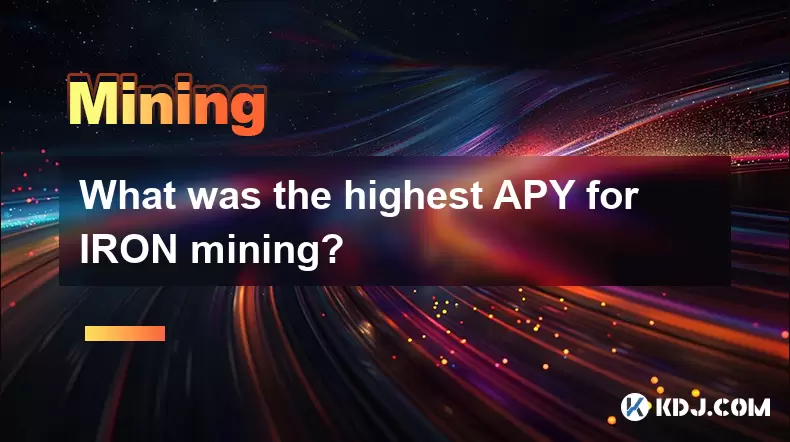
What was the highest APY for IRON mining?
Jul 23,2025 at 05:14am
Understanding IRON Token and Its Mining MechanismThe IRON token is a stablecoin that operates within the Iron Finance ecosystem, primarily on blockcha...

What is impermanent loss in IRON pools?
Jul 23,2025 at 09:00am
Understanding Impermanent Loss in the Context of IRON PoolsImpermanent loss is a phenomenon that affects liquidity providers in decentralized finance ...
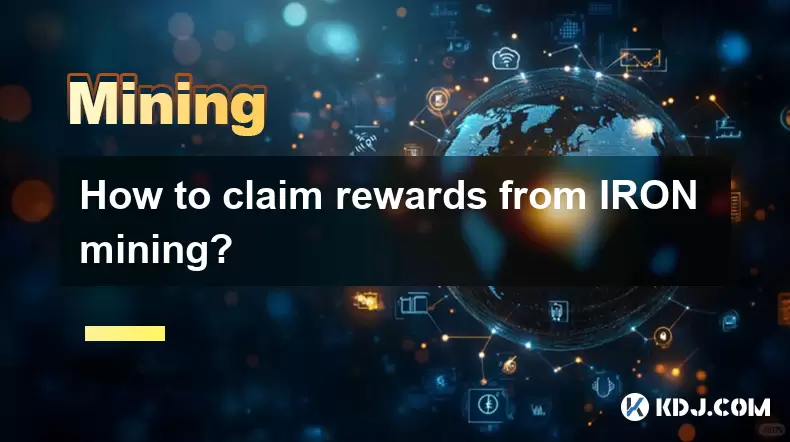
How to claim rewards from IRON mining?
Jul 23,2025 at 02:21pm
Understanding IRON Mining and Reward MechanismsIRON Finance operated as a decentralized finance (DeFi) protocol on the Polygon and Binance Smart Chain...
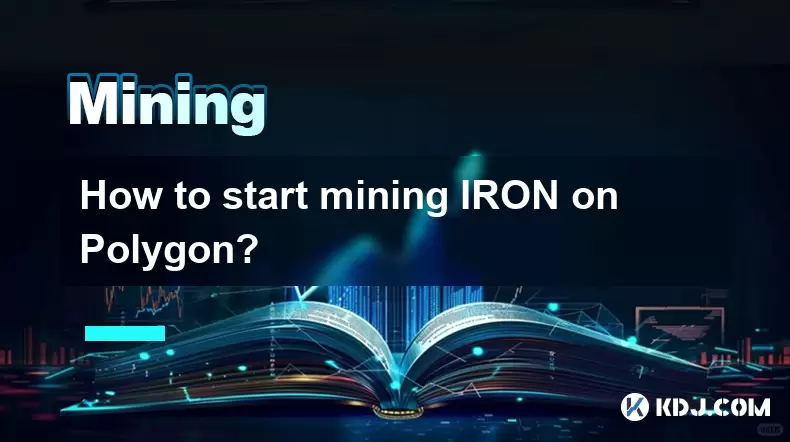
How to start mining IRON on Polygon?
Jul 23,2025 at 08:00pm
Understanding IRON and Its Role on PolygonIRON is a decentralized, algorithmic stablecoin designed to maintain a 1:1 peg with the US dollar. It operat...
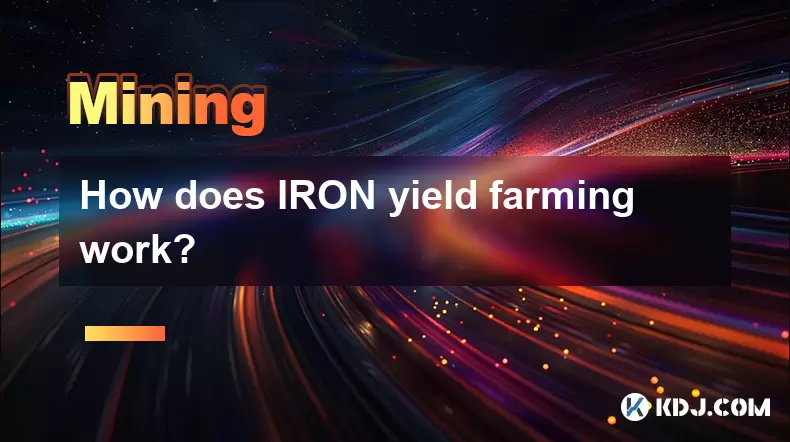
How does IRON yield farming work?
Jul 23,2025 at 10:14pm
Understanding IRON Yield Farming and Its Core MechanismIRON yield farming is a decentralized finance (DeFi) strategy that allows users to earn rewards...
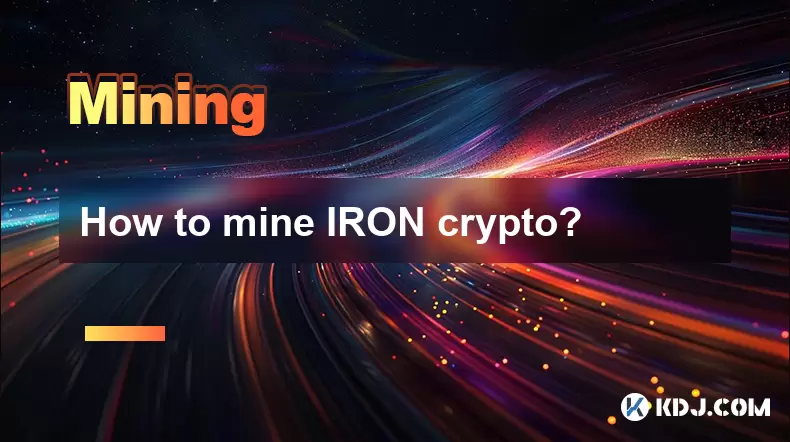
How to mine IRON crypto?
Jul 23,2025 at 07:08pm
Understanding IRON Crypto and Its Mining MechanismIRON crypto is not a standalone blockchain-based cryptocurrency that can be mined using traditional ...

What was the highest APY for IRON mining?
Jul 23,2025 at 05:14am
Understanding IRON Token and Its Mining MechanismThe IRON token is a stablecoin that operates within the Iron Finance ecosystem, primarily on blockcha...

What is impermanent loss in IRON pools?
Jul 23,2025 at 09:00am
Understanding Impermanent Loss in the Context of IRON PoolsImpermanent loss is a phenomenon that affects liquidity providers in decentralized finance ...

How to claim rewards from IRON mining?
Jul 23,2025 at 02:21pm
Understanding IRON Mining and Reward MechanismsIRON Finance operated as a decentralized finance (DeFi) protocol on the Polygon and Binance Smart Chain...

How to start mining IRON on Polygon?
Jul 23,2025 at 08:00pm
Understanding IRON and Its Role on PolygonIRON is a decentralized, algorithmic stablecoin designed to maintain a 1:1 peg with the US dollar. It operat...

How does IRON yield farming work?
Jul 23,2025 at 10:14pm
Understanding IRON Yield Farming and Its Core MechanismIRON yield farming is a decentralized finance (DeFi) strategy that allows users to earn rewards...

How to mine IRON crypto?
Jul 23,2025 at 07:08pm
Understanding IRON Crypto and Its Mining MechanismIRON crypto is not a standalone blockchain-based cryptocurrency that can be mined using traditional ...
See all articles

























































































